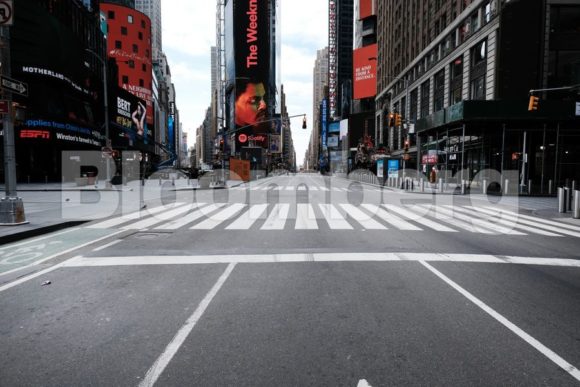Public confidence in virus control, rather than the length and stringency of government lockdowns, may be the best way to gauge how economies emerge from this year’s pandemic – though tracking that confidence can be a bewildering business.
Apparent gaps between what people are saying and doing complicate the task facing economists in assessing confidence, and how economies are expected to heal – at least before the arrival of a game-changing vaccine that’s still likely to be at least six months away.
Britain provided an example of this confusion last week, with retail sales volumes returning to pre-pandemic levels in July despite consumer confidence polls remaining mired in gloom close to 10-year lows for the past two months.
There’s a similar picture in the United States, where consumer confidence readings are also stuck near six-year lows even as retail sales return to their highest on record in July.
Pent-up savings, government support and a surge in online purchases – reflected in investors’ obsession with technology stocks since March – partly explain the seeming contradictions in data. But only partly, not least with renewal of many of those policy supports in question over the month ahead.
Analysis by management consultancy McKinsey this month said public confidence in overall safety rather than the mechanical ebb and flow of government lockdowns was now crucial to return gross domestic product quickly to pre-COVID-19 levels.
The firm’s economists reckoned the actual or expected drop in GDP across developed economies through June of this year was not as tightly correlated with the stringency of societal lockdowns, or their length, as many investors had assumed.
It said high-frequency data found no significant difference in employment or consumer spending between U.S. states that maintained longer lockdowns versus those that relaxed them early.
And it cited a study by University of Chicago economists Austan Goolsbee and Chad Syverson of footfall at 2.25 million U.S. companies and found differences in local restrictions accounted for only 7 percentage points of an average 60% drop in local consumer traffic – indicating people stayed home of their own accord and avoided larger, high-traffic businesses if they did venture out.
“The recovery is limited not so much by policy as the reluctance of individuals to engage in social economic activity,” McKinsey said, adding its own consumer research found that more than 50% “cautious” or “uncomfortable” about re-engaging in daily routines and only 30% saying they’d feel safer when government restrictions are lifted.
LIVES AND JOBS
So how does that confidence re-appear absent a vaccine?
The firm’s polling found it was a whole of variety of issues rather, than any one measure, and also hinged on credible and consistent government communication.
About 75% of consumers would feel more comfortable if they saw people wearing masks, 65% if they saw data of declining infections in their locale and 56% if public health authorities said it was safe to re-engage.
“The evidence heavily suggests that a multifaceted public-health response that goes well beyond a simple transient lockdown is a necessary first step to restore confidence,” it said, adding the GDP impact of getting that right was huge and every three-month delay in controlling the virus pushed back the return of GDP to pre-crisis levels by six months.
And yet the public response gets murkier when you see some other polls.
Asset manager Franklin Templeton last month sponsored the first in a series of surveys of 10,000 Americans by pollster Gallup and found stark misperceptions about the effect of COVID-19 that may speak to both economic behavior, the efficacy of public information and where people get their news.
For example, the poll showed people on average thought about 50% of those killed by the disease were older than 55 – whereas official figures show 92% of fatalities in that group.
What’s more, political affiliation also appears to play a big part. While 52% of U.S. adults as a whole say they are now still uncomfortable flying, the number was 42% for Republicans, 59% for Democrats and 54% of independents. Similar breakdowns appeared for questions on restaurant dining.
“The fact that a large share of the population overestimates the COVID-19 danger to the young will make a targeted public health response more difficult to agree on,” said Sonal Desai, chief investment officer at Franklin Templeton Fixed Income.
“We think it is also likely to delay the recovery, causing a deeper and prolonged recession.”
Of course, for economists to extrapolate economic consequences, they must believe that the actions of people polled will be true to their words.
For retail at least, this might have been a bum steer through this summer and the true picture remains an enigma.
(by Mike Dolan, Twitter: @reutersMikeD; Editing by Pravin Char)
Topics USA
Was this article valuable?
Here are more articles you may enjoy.



 Consumer Acceptance of Telematics Widens, Says Survey
Consumer Acceptance of Telematics Widens, Says Survey  MAPFRE Accuses AAA of Violating Long-Time Exclusive Marketing Agreement
MAPFRE Accuses AAA of Violating Long-Time Exclusive Marketing Agreement  Good Times for US P/C Insurers May Not Last; Auto Challenges Ahead
Good Times for US P/C Insurers May Not Last; Auto Challenges Ahead  Adjusters Launch ‘CarFax for Insurance Claims’ to Vet Carriers’ Damage Estimates
Adjusters Launch ‘CarFax for Insurance Claims’ to Vet Carriers’ Damage Estimates 

